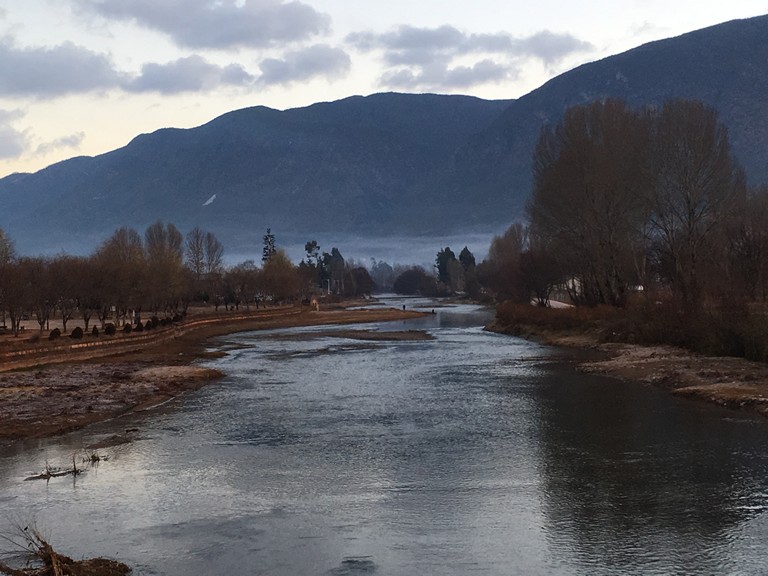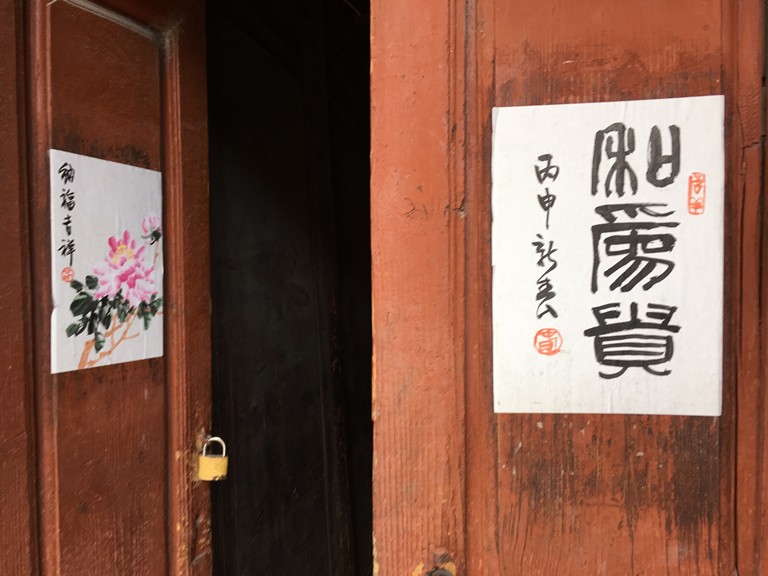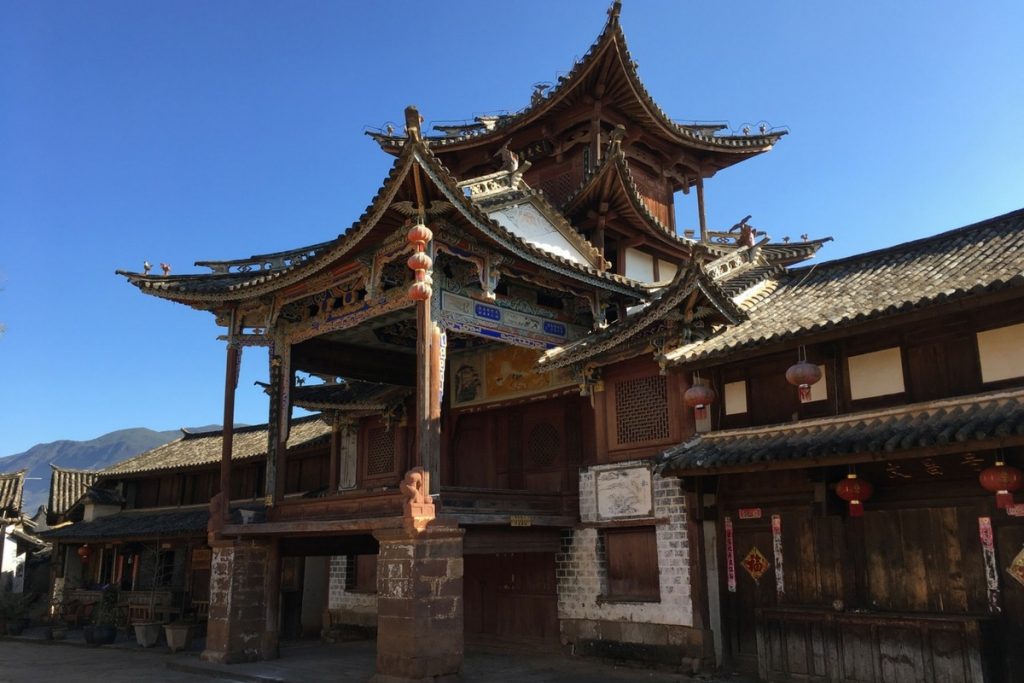Your not so typical Yunnan Travel Guide
With its breathtaking landscapes and diverse mix of cultures China’s Yunnan province is a favorite destination drawing countless local and international travelers. This is a must read Yunnan Travel Guide if you are planning to head to the south west China region.
No matter what your Yunnan travel itinerary, you will be sure to stop by the famous and well persevered historic towns of Dali and Lijiang. Most tourists simply rush from one town to the next, however the real beauty of Yunnan’s traditional culture is hidden in the smaller villages dotted between. Here, ancient traditions long forgotten in China’s big cities are still very much alive, and surprises are waiting around every corner.
This Yunnan travel guide will slowly take you along the 200km road winding north from Dali to Lijiang, stopping at a few must-see spots along the way.

Dali
The best place to start is Dali, where the walled Old Town is perched on a hillside between the wide blue expanse of Erhai Lake and the mist-shrouded Cangshan Mountains.
With a train station and an airport connecting Dali to pretty much everywhere else in China it is pretty easy to get to. Both are located in the New Town called Xiaguan. This is about a half hour bus ride south of the Old Town.
The bus will likely drop you off at one of the two main streets running through the center of town. These streets are clogged with tour groups and trinket sellers so get away from here as soon as you can. While you won’t be able to totally escape the tourists, Dali’s side streets have a more relaxed feel and attract a more artsy bohemian crowd.
Plan out your next adventure over a ridiculously cheap fresh-brewed coffee in one of the town’s many hole-in-the-wall cafes. Alternatively you can brush up on your Chinese folk songs in a cozy music bar.
Xizhou
Moving north with this Yunnan travel guide your next stop will be Xizhou. It’s a small town famous for being the best-preserved village of the Bai people. Their love for whitewashed stone walls, colorful frescos and elaborate carvings almost suggest hints of Italy or Spain.
Minibuses leave all day from the Xiaguan Bus Station in Dali and the trip takes just 20 minutes. You may be able to flag down a bus as it passes the Old Town’s West Gate, but they tend to fill up quickly and you’ll probably end up sitting on the floor.
The bus will drop you off at an elaborate gate in Xizhou leading to a cluster of traditional houses. Don’t go inside – this is a cleverly-disguised modern reconstruction that charges a hefty fee to get in. For the real thing, keep going down the street and head left.
To really dive into the daily life of the village, keep going until you find the outdoor market. Here the usual fruits and vegetables are joined by baskets piled with rubing, the local goat milk cheese.
Take your time getting lost in the countless narrow alleys branching off from the main road, doubling back and dead-ending. Marvel at the honeycomb-patterned roofs, almost Roman style arches, elaborate wall paintings and calligraphy.
Some historic houses are marked with a plaque out front. While these houses may look like museums, you’ll still find families living inside. Step inside with a smile and ni hao and you’ll usually be welcomed in, and maybe even get an invitation to lunch!

Shaxi
Virtually unknown a decade ago, Shaxi has shot to fame in recent years as a favorite spot for city dwellers to get as far away as possible from the urban rat race.
The town square is ringed with boutique hotels and cafes however Shaxi’s remote location means the streets are deserted outside peak season. It’s a perfect place to while away a few days in peace and quiet. Soak up the sun beneath the stage of the centuries-old outdoor theater or go for a bike ride in the surrounding hills.
Shaxi is a big draw for photographers. If you wake up before dawn you’ll see a trickle of them with tripods heading out the town’s south gate to capture a picture-perfect sunrise above the ancient stone bridge.
Another hidden gem in Shaxi is the Ouyang Courtyard. This is the home of a once-powerful merchant family, tucked away at the end of a narrow alley on your right as you head uphill from the town square. While you’ll be asked to pay an entrance fee of 10 yuan, the 70 year old matriarch of the family will be glad to show you around, explaining the complex symbolism of the intricate wood carvings that ring the courtyard and telling stories from the family’s tumultuous history. This experience is well worth the small expense.

Jianchuan
To reach Shaxi you’ll need to stop at Jianchuan. Here you will exchange a minibus for an even smaller minibus embarking on a 45 minute zig-zagging mountain journey. Unlikely to end up on the face of a postcard, Jianchuan is a fascinating example of the complexities of life in modern Yunnan – and China as a whole.
Jianchuan is in the middle of a massive project to boost tourism, with new hotels being built and ancient temples and pagodas being refurbished. Meanwhile countless centuries-old homes are being demolished and the once picturesque Ximen Street is now mostly rubble and scaffolding.
However ancient traditions are very much alive in Jianchuan. Walk down any street and you’ll notice the front door of nearly every home is decorated with hand-drawn paintings and red paper scrolls written in gracefully flowing calligraphy. Some offer blessings for the New Year, others carry congratulations for a wedding or other joyful event. The occasional white scrolls, in contrast, mark homes that are in mourning over a death in the family.
While not worth an entire day Jiannchuan still makes for a fascinating walk while waiting to catch the next bus.

Lijiang
Lijiang is the epicenter of Yunnan’s tourist industry and the last stop along this Yunnan travel guide.
The key to enjoying Lijan is getting in the right mindset. If you go expecting an authentic traditional village, you will be sorely disappointed. If you brace yourself for a level of kitsch that would make Walt Disney cringe, you’ll have a great time.
After all, what other Chinese village gives you the chance to walk down a street of bars and nightclubs neon-lit bars featuring singers dressed like Mongolian shepherds, drop in for an impromptu lesson at one of dozens of identical African drum stores, smoke cigarettes made from pu’er tea, and take selfies with a wax statue of Vladimir Putin?
Entrance to the old town nominally costs 80 RMB, but ticket sellers at the largest entrances tend not to enforce this rule so strictly, and around 7pm they all go home.
For perhaps the last remaining foothold of “old Lijiang”, check out the Zhengyi Market, where old ladies in traditional dresses drive a hard bargain over towering piles of fruits and vegetables, and medicine sellers hawk an array of exotic-looking herbs grown on the not-so-distant Tibetan plateau.
Or to take a different kind of walk back in time, check out Hong Taiyang Square, where a towering statue of Chairman Mao waves his concrete hand over rows of fluttering red flags and Cultural Revolution-era slogans.

And then?
As a regional hub, trains, planes, and buses from Lijiang lead on to just about anywhere in Yunnan and beyond. Whether it’s the jungles of Xishuangbanna, the rice terraces of Yuanyang or the Tibetan villages of Shangri-La the next step is up to you.
Suggested trip: Head south east to the Ban Gioc-Detian Falls on the Vietnam China border
We hope this Yunnan travel guide has opened your eyes to some of the lesser seen destinations in the area. Where are you heading to next?
About the Guest Author
Based in Beijing, Michael is fascinated by the surprises hidden just around the corner from the well-worn tourist trail, but is just as willing to venture into the foothills of Tibet or bike down country roads in Vietnam, as long as he knows there’s a good story waiting at the end.




